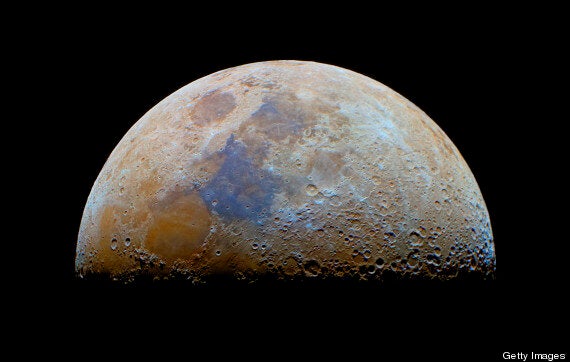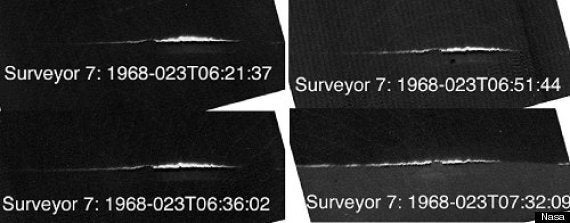Strange 'flashes' reported on the Moon for hundreds of years have long mystified researchers - and even Nasa - with many arguing they don't even exist.
But now a new analysis of the phenomena has shown they are real - with at least 2% of sightings classed as "definitive".
Unfortunately, we still don't know what causes them.

Usually involving a sudden bright spark on the Lunar surface, or else a misty 'patch' of fog, discolourations or sudden darkenings, so-called 'Transient Lunar Phenomena' are a controversial area of study.
The term was coined by Sir Patrick Moore in 1968, but reports of these strange sights have been noted for more than 1,000 years.
Some of TLPs have been explained as mistakes by astronomers, such as an incident in the sixteenth century when a 'daytime star' spotted near the Moon was later explained to have actually been a sighting of Venus.
But others have been made by established scientists. Even Neil Armstrong noted "an area that is considerably more illuminated than the surrounding area" during the Apollo 11 moon mission in 1969, after Nasa commissioned a study to look into the sightings.

Above: A strange 'horizon glow' spotted by the Surveyor 7 Moon lander in 1968
Various photos and other material has been produced over the years to try and support the evidence for their existence.
Part of the problem in working out what they are is that the glowing effect is extremely subtle. Unlike sudden flashes caused by the impact of asteroids, these effects are much harder to spot.
In a recent study the British Astronomical Association's Jill Scrambler looked at reports of TLPs between 1700 and 2010, and weighted each for the known reliability of its observer - from amateurs to respected astronomers. The amount of data used was impressively large, and the statistical analysis very thorough.
The result?
At least 2% of the reported TLPs were said to be "definitive" and "unambiguous" - meaning something is going on above our heads. We just don't known what.
Some have sought to explain TLPs by reference to the Solar Cycle, in which the Sun generates solar flares and sunspots in "peaks" over a regular 11-year timeframe. Suggested by H. Percy Wilkins in 1945, the idea was that the sun might illuminate areas on the Moon in sudden bursts - potentially in a similar way to the Northern Lights seen on Earth, though the mechanism itself was (or is) unknown. Unfortunately, it now looks like that explanation has been quashed too.
For according to Scrambler there is "no evidence" of a link with the solar cycle.
"Although there are theories that might infer that TLP would be more frequent during high solar activity, from the sunspot cycle perspective there is no evidence to support this!" Scrambler wrote.
"Quite clearly there is little evidence for TLP activity correlating with the sunspot cycle, and any apparent correlation suggested in the past … was simply due to not having enough data points which we have now collected in retrospect."
So what is the cause?
Sadly, researchers still aren't sure. It could be something to do with the 'plasma tail' left by the Earth as it orbits the Sun, gas from inside the Moon escaping from underground caverns, or else they could be caused effect of Earth's atmosphere on observations - and have nothing to do with the Moon at all.
Fortunately a new spacecraft - the Lunar Atmosphere and Dust Environment Explorer - will launch in the Summer, and might be able to offer a better explanation.